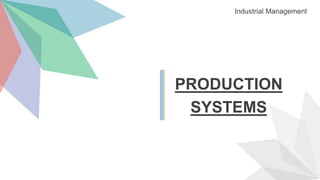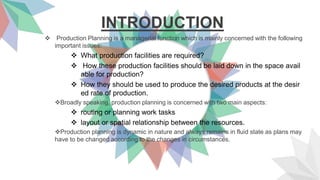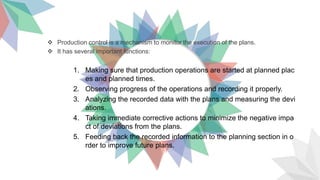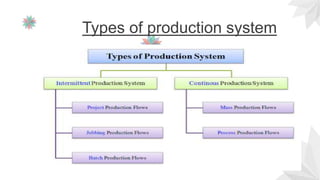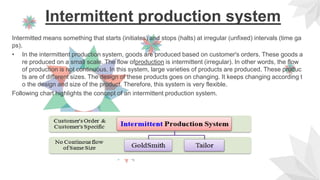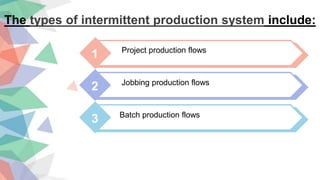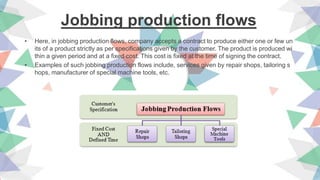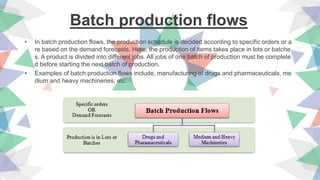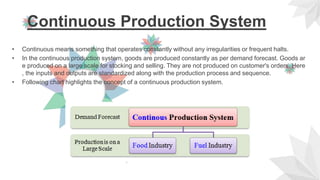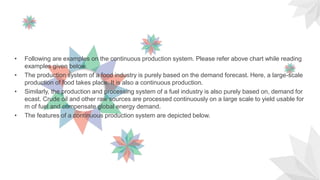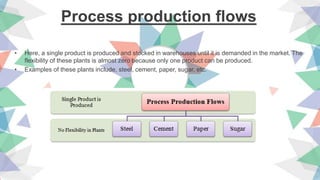Production planning and control are important managerial functions concerned with determining production facilities, layout, and rates to produce desired products. Production planning considers routing and layout, while production control monitors execution against plans and takes corrective actions. There are three types of production systems: intermittent, continuous, and batch. Intermittent production produces goods in small batches based on customer orders and is flexible. Continuous production constantly produces standardized goods on a large scale based on demand forecasts. Batch production divides production into lots that must be completed before starting the next batch.
